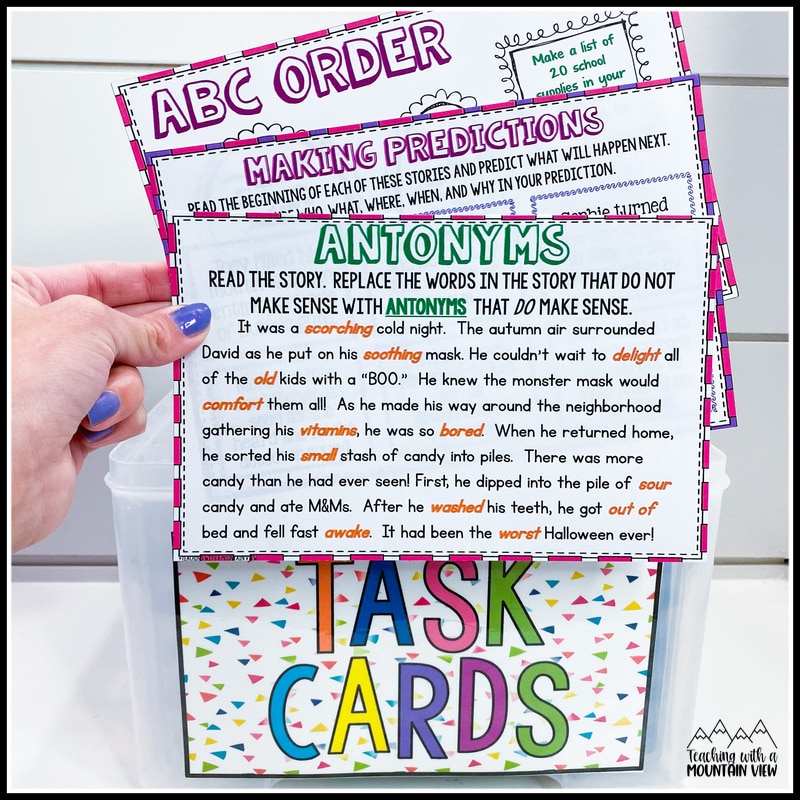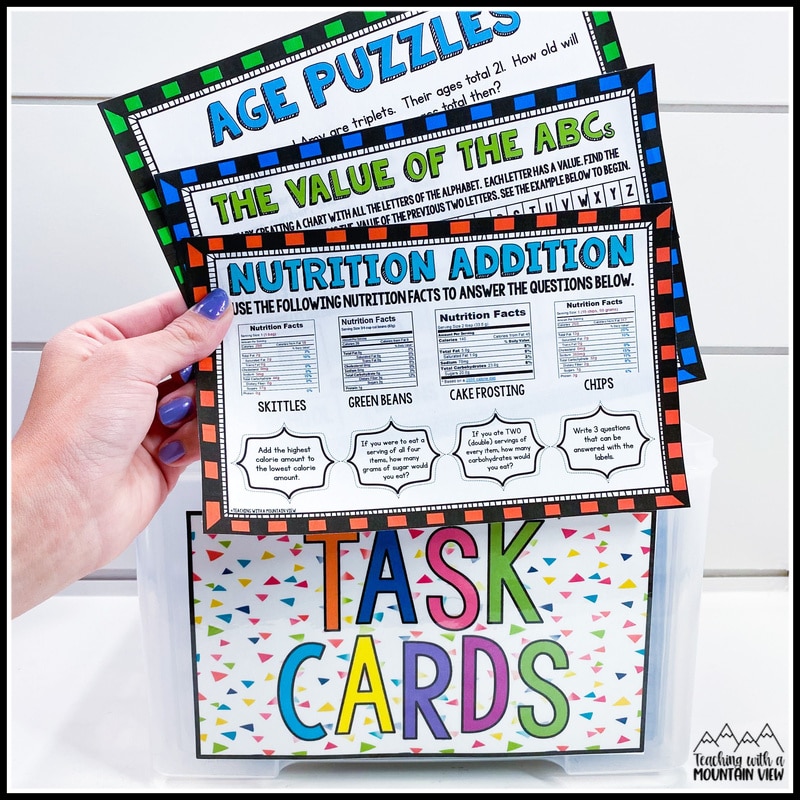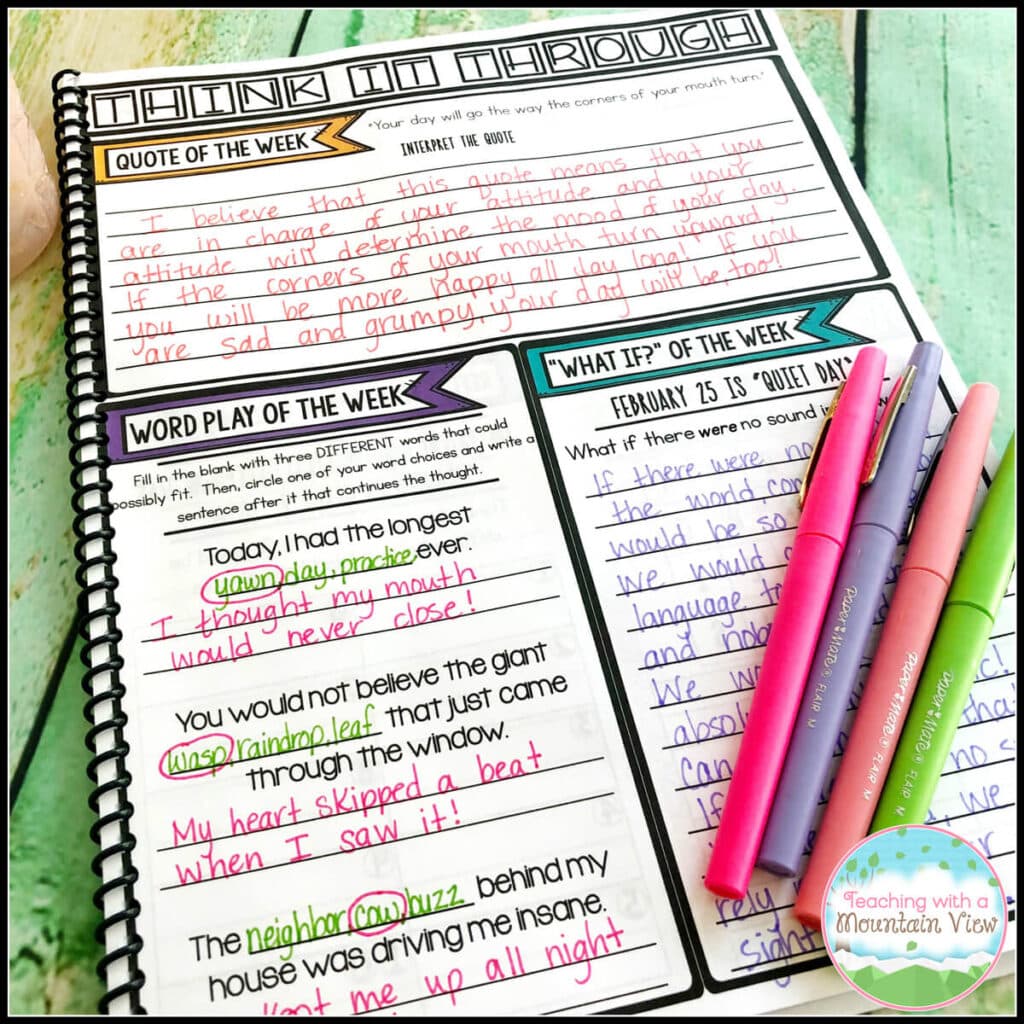Differentiating and Meeting the Needs of Gifted Learners
By Mary Montero
Share This Post:
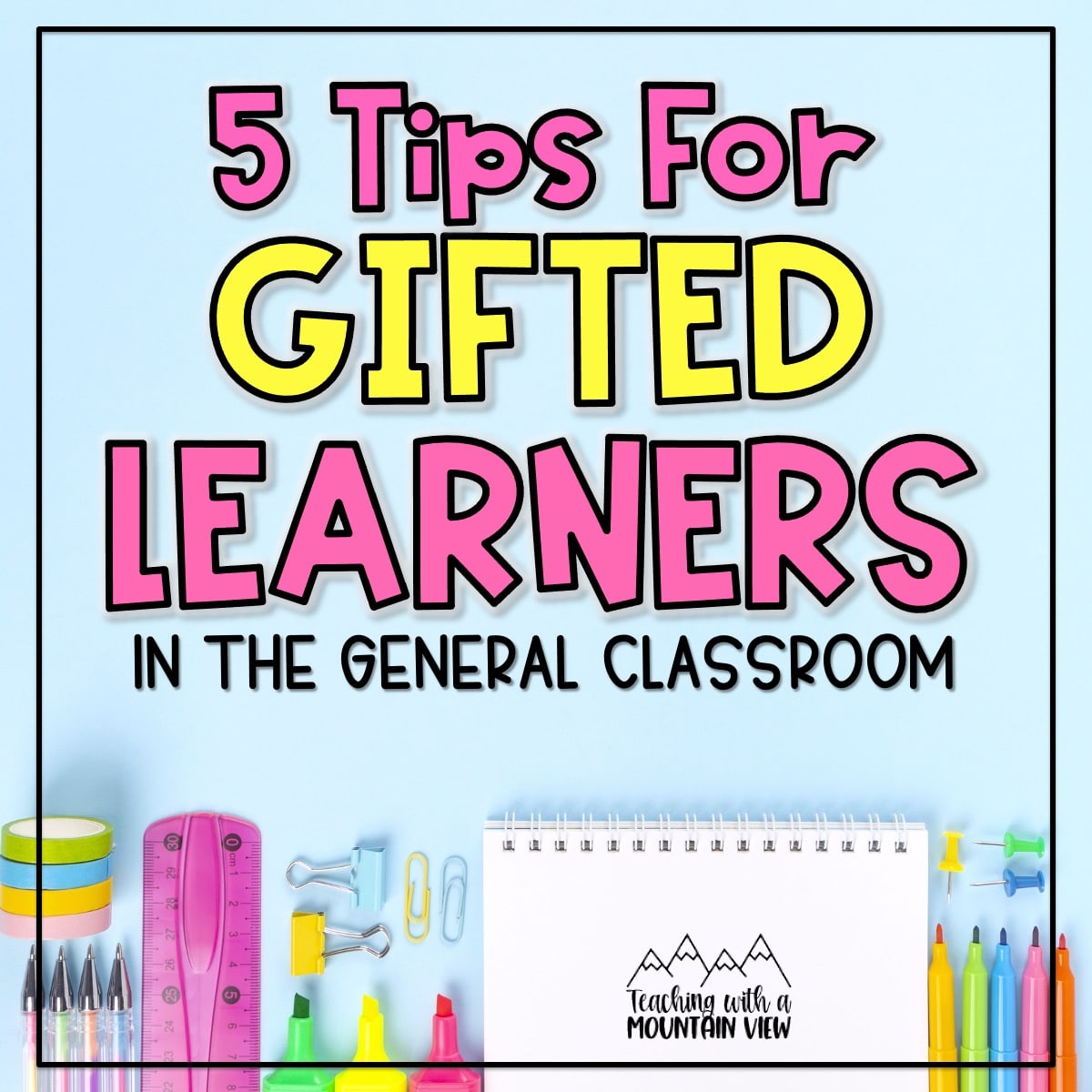
We often have meetings and professional development about helping struggling learners, but I’ve found that it’s rare to talk about differentiation for gifted learners. While helping our struggling learners is extremely important, providing differentiated opportunities for our gifted students can also have a huge impact.
Just like we have accommodations and modifications we can make for struggling students, we can also make modifications for our gifted learners. As a gifted facilitator, this is something I’m extremely passionate about, and I hope you’ll consider this special population when you’re making your differentiated lesson plans.

5 General Classroom Tips for Meeting the Needs of Gifted Learners
Here are some of the strategies and tools I use while working with gifted learners in the general education classroom.
Tip #1: Utilize Pre-Assessments
When we talk about pre-assessments with our struggling learners, we are looking for ways to fill the gaps students are missing. With gifted students, pre-assessments allow you to target which skills your students have already mastered.
When a student shows mastery on a pre-test, that doesn’t mean you’ll skip over the skill entirely. Rather, this is where the modifications would come into play! You can find ways to make the curriculum more challenging, such as pushing students up the critical thinking and application ladder. Consider incorporating error analysis for the skill or an enrichment-based math project. You can also use enrichment resources that your curriculum provides.
Try This: If a student scores 95% or above on a unit pretest, select two to three of the most difficult questions on the post-assessment and give them to that student. If they are able to solve them, do not require that they complete all of the given work for the unit. This is a clear sign that students need a significant modification of the curriculum.
Tip #2: Encouraging Divergent Thinking
With our struggling learners, we often try to eliminate confusion by making some content as straightforward as possible. This might mean offering a standard definition for words, teaching a specific way to solve a problem, and so forth.
With gifted and talented students, however, embrace divergent thinking, a common trait among many of our gifted students. Meaning, it’s okay if you students are all solving math problems using a different process – as long as we end with the same answer. It’s okay if we have slightly different meanings of theme or don’t use the same formula for writing a body paragraph, as long as we are still meeting the expectations of the content.
It may be hard to accept, but I encourage my divergent thinkers to to question solutions, debate content, and create their own answers as often as possible.
Try This: Ask students to create a new way to display a concept, have them debate answers to math problems, or give them open-ended math tasks from a website link NRICH. Give them completely free creative authority to complete the task.
Tip #3: Project Based Learning
Project based learning is another way to let gifted students explore their unique talents and interests. One reason is that it involves various skills and content, so students must be able to synthesize what they know from various content areas. Second, project based learning generally requires higher level thinking and challenges students to apply their knowledge. You can encourage students to do true PBL, or you can have students do guided projects. You can learn more about reading projects or math projects in these posts.
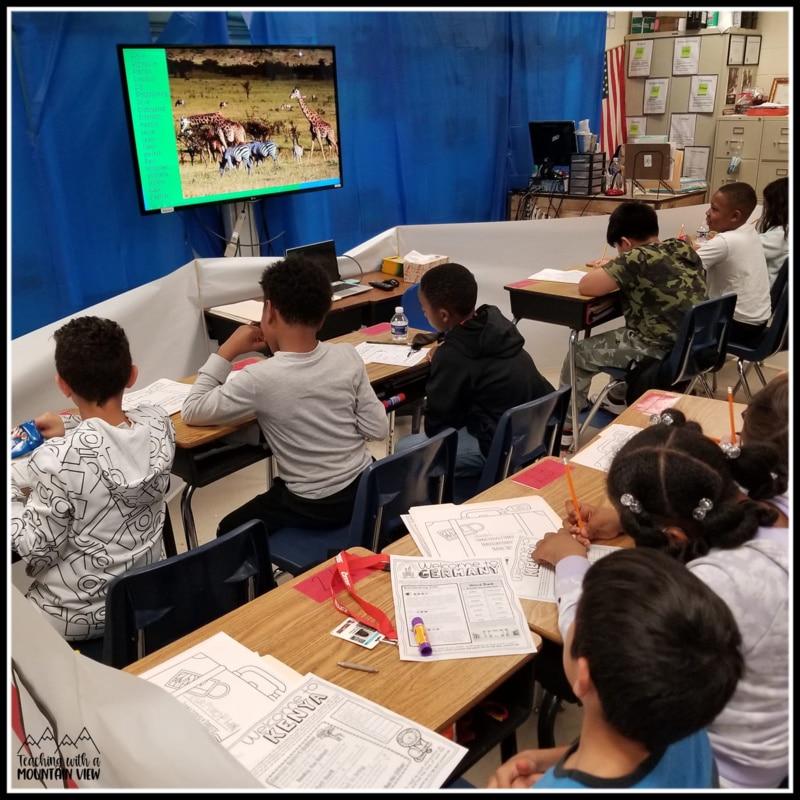
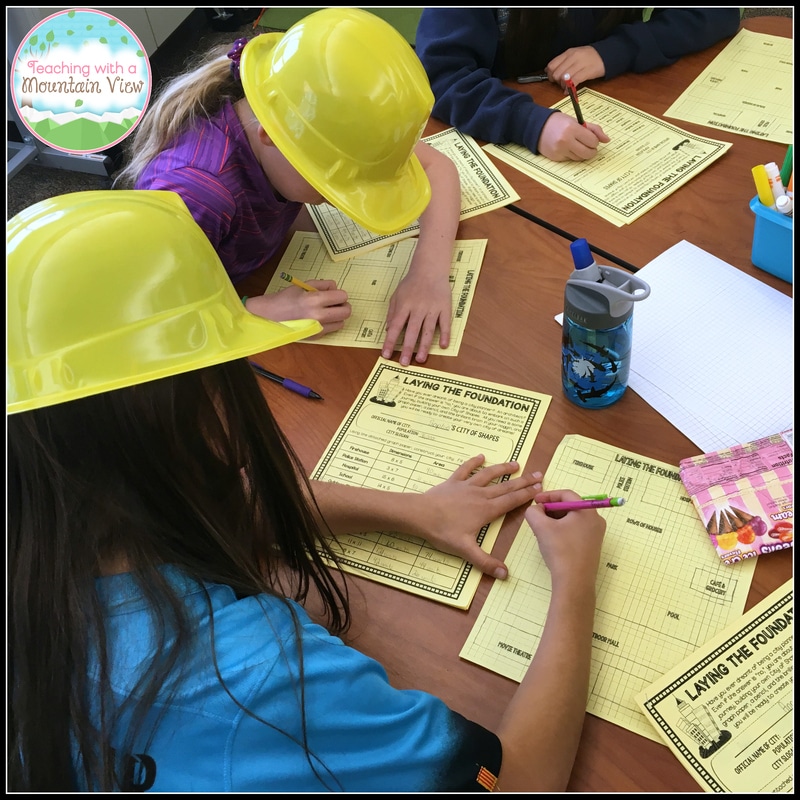
Tip #4: Curriculum Compacting and Acceleration
With gifted and talented students, there may be times when you can condense your curriculum or accelerate it. Compacting and Accelerating are two common terms used in the gifted community
- Curriculum Compacting: Breaking down the grade level standards/content by eliminating a lot of the repetition that commonly occurs. Doing so allows time for enrichment activities and acceleration. It isn’t meant to get rid of the curriculum but significantly shorten the duration of time that is spent on it. Learn more about curriculum compacting here.
- Acceleration: Moving beyond the grade level curriculum standards to learn content at an accelerated pace. Learn more about acceleration here.
Tip #5: Passion Projects
Like many students, gifted and talented students thrive with choice. You will often see their strengths thrive when they can focus on passion projects. When a student is gifted, that doesn’t mean they enjoy every subject or know everything. Rather, it may mean they have particular strengths in some areas.
By using passion projects, students can use their gifted strengths to access content they normally would be excited about. For example, a student may be particularly gifted in social studies. They may do research on WWII, and also collect data to use in their math class – such as creating graphs, making data comparisons, and so on.
Common Mistakes Working with Gifted Learners
When people talk about gifted and talented students, a lot of misconceptions can come up. These usually aren’t ill-intended, but rather, many teachers haven’t been given the resources and professional development they need to know how to work with gifted learners. The Gifted Children’s Bill of Rights is a great place to start when talking about the needs of gifted students.
Misconception #1: Gifted Students Need More Work
A lot of teachers will find that their gifted students are finishing work really quickly, and they aren’t sure what to do. Their solution is to give students more work. But, gifted students don’t need more work, they need a different kind of work.
This is where knowing your students and using data will come in handy. If you see your gifted student is mastering the content, modify the work by increasing the level of the work or offer an alternative assignment that serves the same skill, but in a way that will benefit your gifted student.
Then, make sure you have a plan for productive and meaningful activities if your student does finish early. This is where I really like to use this Early Finisher bundle. It includes creative thinking task cards, journaling tasks, enrichment assignments, and more. It makes having productive, beneficial work a no-brainer.
Misconception #2: Gifted Students Dominate Class Discussions
We have all had that student who knows the answer to every question (and while you love that, you also want to give other students a chance!). However, gifted students want to be able to participate in class discussions, too. I recently had a gifted student tell me that they ALWAYS raise their hand but their teacher hadn’t called on them all week long because “they know I know the answer.” This child felt defeated and like they didn’t belong it the classroom.
If you find you have a student who wants to be heard often, have them write down their responses that they can show you later. Additionally, have students talk to a partner or group first before sharing with the whole class, so your gifted students have a chance to be heard by their peers. And of course, give them a chance to share! Give ALL of your students time to think and pause before you have them answer.
Misconception #3: Gifted Students are Classroom Tutors
We’ve all been there. Your gifted students finish early, so you have them walk around and tutor students who need help. While this is valuable to do on occasion, if your gifted students are finishing early all the time it means it’s time to enrich their work and differentiate.
In addition to heterogeneous groups, gifted and talented students need regular homogeneous grouping too in order to work with peers who can engage in the higher level discussions with them. Resist the urge to always put your gifted students with students who need their support. It is not best practice for gifted students.
These Monthly Critical Thinking Task Cards are one of my favorite activities for my gifted students. They make for really interesting discussions between students, and I love seeing they ideas come up with. I’ll have each student write down their answers, but they can discuss them together. They answer questions like, “Think of alternate uses for some of your school supplies” and “Imagine you are the inventor of the zipper. How would you advertise its uses to your readers?”
Misconception #4: All Gifted Students are High-Achievers
Have you ever been good at something, but hated doing it? Having a strength in something doesn’t mean you automatically come with the passion and ambition to make it happen. The same is true for gifted students. While many of them will be high-achievers, others will not. In fact, many gifted students will become perpetual underachievers, particularly if they are not given appropriately challenging work.
Not all gifted students want to go above or beyond to utilize their strength, but we do want to prevent them from being complacent or unwilling to try, just like we would with our general education students. Encourage your gifted students to find their internal motivation for working hard, and help them set goals in school.
Misconception #5: Gifted Students are More Mature for their Age
When we think of a student being gifted in school, it’s easy to assume that they will also be mature for their age. Their ability to do more comes from them being more mature, right? Not necessarily. Many students who are gifted may experience asynchronous development. This is when a child’s social and emotional development is not in sync with their academic development. This can be really confusing for teachers and students.
Teachers may, unthinkingly, treat a student as if they were older because they are displaying higher level thinking and communication skills – only to be shocked by a student’s behavior. “He should know better!” but really, that student’s emotional development is not at the same level. A student may feel they are often “letting down” others, when they are simply acting their age or doing the same behaviors as other students.
Misconception #6: Gifted Students have Great Test Scores
You might assume that a student who is showing higher performance in certain content areas would have amazing test scores or show growth year after year, but that’s not always the case. For some students, they may be gifted, but testing is not what they are gifted at. Their anxiety or simply the format of the test may prove challenging.
For other students, they may perform well on tests each year, but overall show little growth. They may be consistently high achievement but low growth. This is a common conundrum for teachers of gifted students… It seems like the student has plateaued at a certain level of knowledge or only growing by small increments. This is fairly typical, and I love this article for explaining the high achievement, low growth phenomenon to parents.
If you aren’t sure where to start with your gifted students or are struggling to differentiate, morning work is a super simple way to start. I use this Morning Work Journal every day with my gifted students. The journal includes 45 weeks worth of enrichment and extension activities that push students critical and creative thinking.
For example, they might look at a famous quote and interpret the meaning, or be given a challenging “What If” question to write about. These always lead to the most fun classroom discussions (and my students could seriously talk about it for hours).
What questions or ideas do you have about working with gifted learners in the regular classroom? Come share your ideas with us in our FREE Inspired in Upper Elementary Facebook group.
Mary Montero
I’m so glad you are here. I’m a current gifted and talented teacher in a small town in Colorado, and I’ve been in education since 2009. My passion (other than my family and cookies) is for making teachers’ lives easier and classrooms more engaging.







